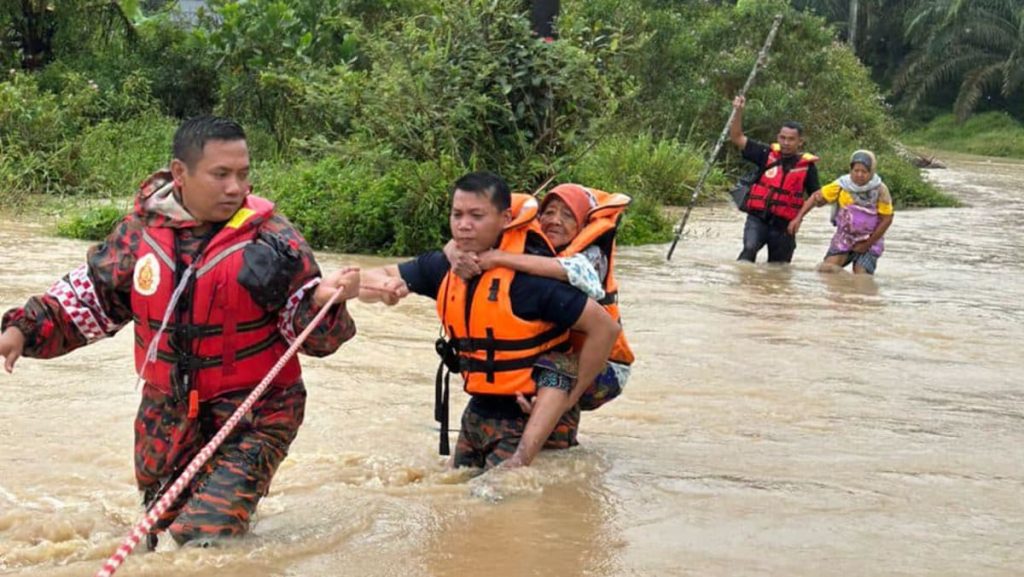The southern Malaysian state of Johor is grappling with the early stages of its annual monsoon season, with floodwaters impacting over 3,295 individuals across five districts as of Sunday, January 12th. This represents a significant increase from the 2,524 reported the previous night, indicating a rapidly evolving situation. The affected districts include Kota Tinggi, Kulai, Johor Bahru, Kluang, and Pontian, with Kota Tinggi bearing the brunt of the flooding, housing over a third of the displaced population at 1,160 individuals. Authorities have established 34 temporary evacuation centers to provide shelter and aid to those affected. The escalating situation underscores the vulnerability of the region to the seasonal monsoon rains, a recurring challenge for communities residing in low-lying areas.
The distribution of affected individuals reveals the widespread nature of the flooding. Kulai follows Kota Tinggi with 748 displaced residents, while Johor Bahru, Kluang, and Pontian report 502, 455, and 430 individuals seeking refuge respectively. This distribution highlights the need for coordinated relief efforts across multiple locations to ensure adequate support reaches all those requiring assistance. The National Disaster Management Agency (NADMA) is actively monitoring the situation and coordinating the response, working alongside local authorities to manage the evacuation centers and provide essential resources to flood victims. The deployment of resources and personnel will need to remain adaptable as the situation unfolds and potentially impacts additional areas.
Adding to the concern, the Malaysian Meteorological Department’s forecast predicts the continuation of heavy rainfall, raising the specter of further flooding in already impacted areas and potentially extending the reach of the disaster to other districts, including Batu Pahat and Mersing. This forecast necessitates proactive measures to mitigate the impact of further rainfall and prepare communities in potentially affected areas. Preemptive evacuations, reinforcement of existing flood defenses, and ensuring clear communication channels are crucial in minimizing potential damage and ensuring the safety of residents. The possibility of escalating floodwaters underscores the importance of community preparedness and the need for residents to heed warnings issued by authorities.
The already challenging situation was further exemplified by a dramatic rescue effort in Jalan Liku Cina, near Taman Aman. A man was rescued after his car was swept away by strong currents late on January 10th, highlighting the dangers posed by flash floods and the unpredictable nature of rapidly rising water levels. The driver, stranded atop his vehicle which had become lodged against an electric pole, was fortunately rescued by a team already engaged in evacuating other flood victims. This incident serves as a stark reminder of the life-threatening situations that can arise during flood events and the importance of exercising extreme caution when navigating flooded roadways.
The recurring nature of flooding during the monsoon season underscores the importance of long-term mitigation strategies. The eastern coast of Malaysia experiences this annual deluge from October to March, displacing thousands every year. This pattern calls for a comprehensive approach involving infrastructure improvements, early warning systems, and community education programs to enhance resilience against the predictable challenges posed by the monsoon season. Investments in flood control infrastructure, such as improved drainage systems and flood barriers, are crucial in minimizing the impact of future flood events. Furthermore, implementing effective early warning systems, coupled with community education on flood preparedness, empowers residents to respond effectively to impending dangers and safeguard their lives and property.
As the situation continues to unfold, the focus remains on ensuring the safety and well-being of affected residents. The coordinated efforts of NADMA, local authorities, and rescue personnel are critical in providing immediate relief to those displaced by the floods. The ongoing monitoring of weather conditions and potential flood risks in additional areas is equally important. Furthermore, the incident involving the rescued driver serves as a cautionary tale emphasizing the need for heightened awareness and preparedness during periods of heavy rainfall. The long-term challenge lies in developing and implementing sustainable solutions to mitigate the impact of future monsoon seasons, protecting communities and infrastructure from the recurring threat of floodwaters. This includes investing in improved flood defenses, refining early warning systems, and empowering communities with the knowledge and resources to navigate these challenging periods effectively.

